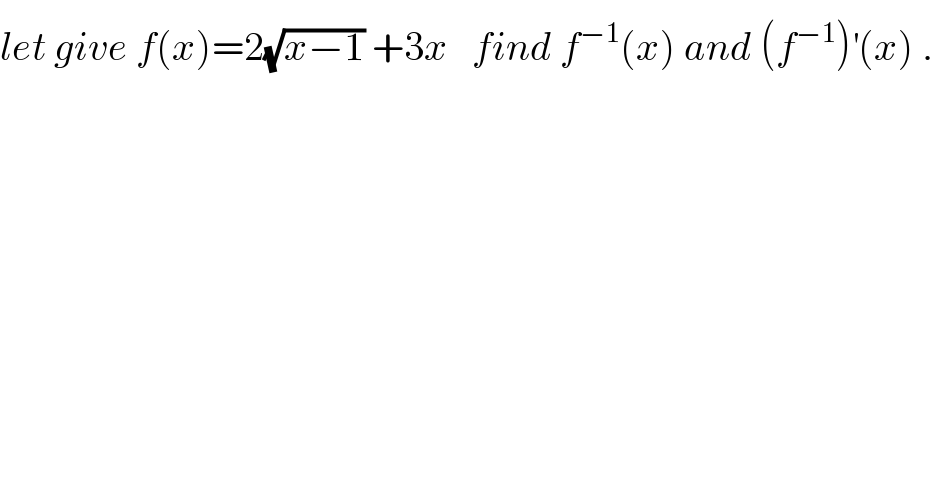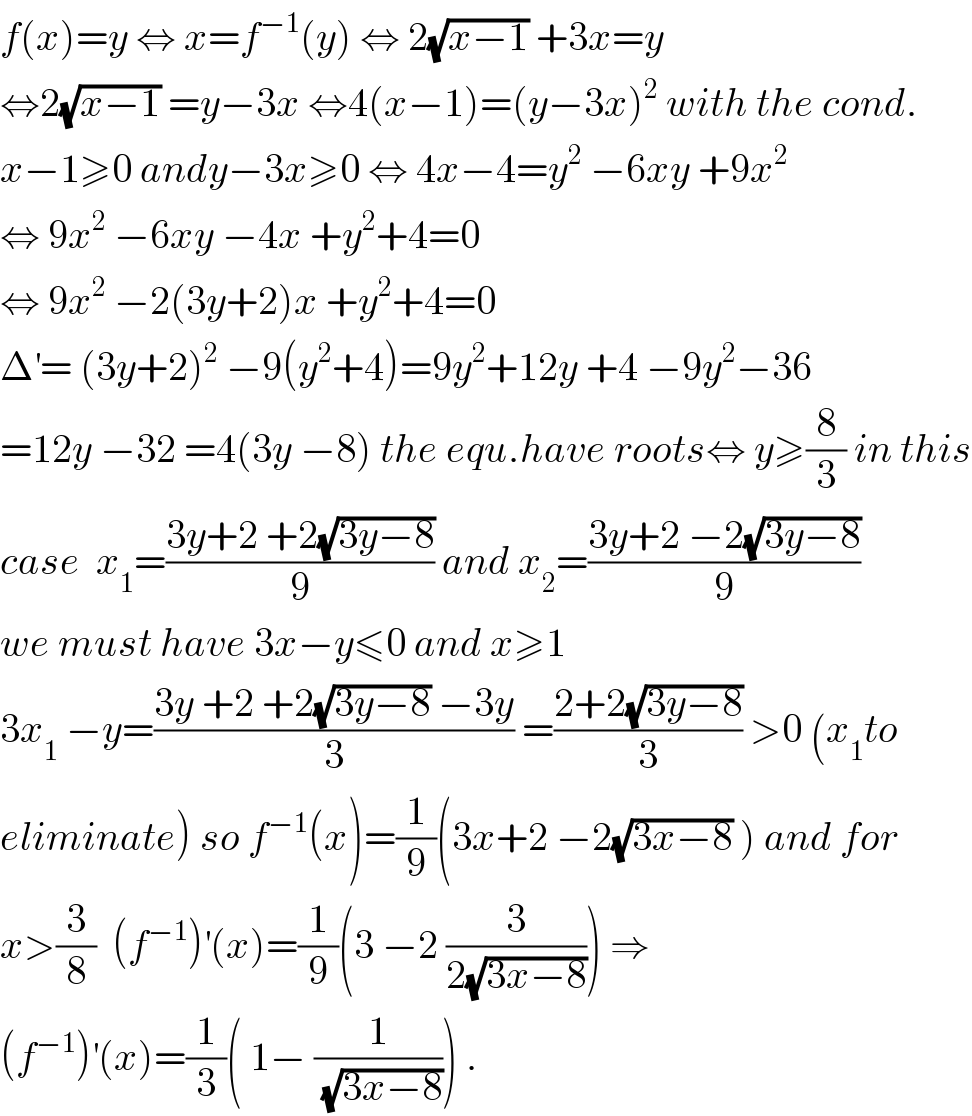
Question and Answers Forum
Previous in Relation and Functions Next in Relation and Functions
Question Number 29159 by abdo imad last updated on 04/Feb/18

Commented by abdo imad last updated on 08/Feb/18

| ||
Question and Answers Forum | ||
Previous in Relation and Functions Next in Relation and Functions | ||
Question Number 29159 by abdo imad last updated on 04/Feb/18 | ||
 | ||
Commented by abdo imad last updated on 08/Feb/18 | ||
 | ||